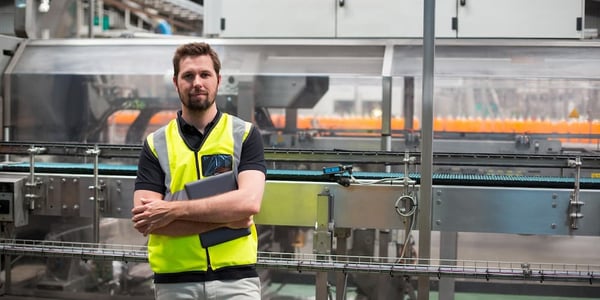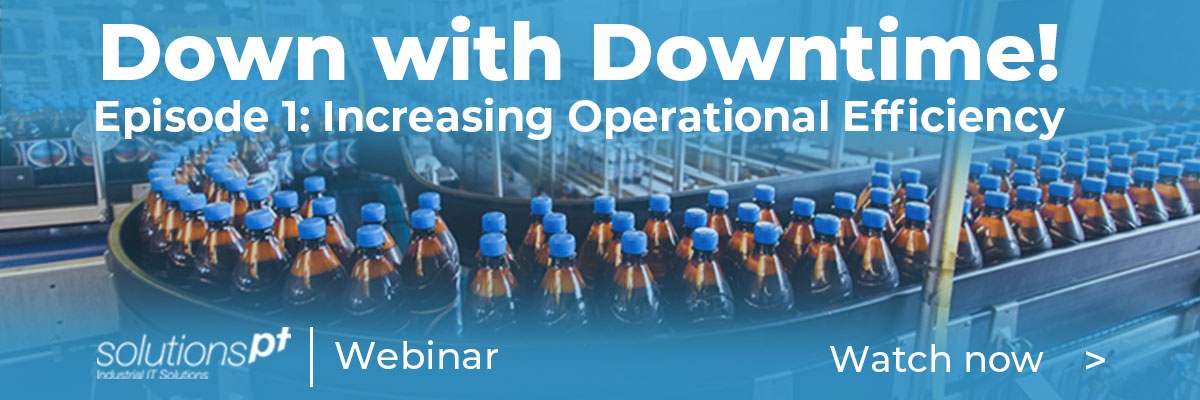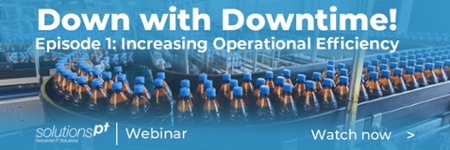To understand the impact Overall Equipment Effectiveness (OEE) measurements have on operational efficiency, we need to first think about the five levels of the automation stack.
Put simply, the bottom layer would consist of devices/PLCs that deal with control. The next would be HMI/SCADA for the visualisation, MES, where our OEE calculation lives, ERP and finally, the enterprise.

All of these layers contain data and it’s likely the right data already exists for you to measure OEE, so you can better understand how well your organisation is performing. Whether this is being done and done correctly, however, is another matter.
- What is OEE?
- How to Calculate OEE
- The Benefits of OEE
- What Decisions Can OEE Measurements Help With?
- How Can OEE Improve Your Operational Efficiency?
What is OEE?
OEE is the highest standard for measuring manufacturing productivity, OEE, is a measurement that tells you the percentage of time spent on the production line that is productive. If your score is 100%, that means there was only good parts and with no stop time.
How to Calculate OEE Performance
OEE is a complex calculation (see image below) and can't be calculated on paper. In fact, it’s completely impossible to measure OEE correctly this way!
The relevant information needs to be gathered from devices and PLCs at the edge and be seamlessly integrated throughout the stack so it can be consumed and utilised at all layers. It can then be sent back down through the stack to aid major decision making.
The Benefits of OEE
Once you’ve calculated OEE, you can utilise it to significant effect.
- Increase overall competitiveness. Getting ahead of the competition should be a core goal of any ambitious organisation. With OEE data, you can better identify any frustrating bottlenecks in production. Sort those and you’ll see those all-important metrics heading in the right direction.
- Reduce machinery cost. Pretty simple. If we understand OEE, we know how well machines are performing. This leads us to any possible issues which might need to be sorted in the near future. Anticipate these production-halting events and enjoy massive cost savings.
- Insight into production. To fully understand where to start with your plant improvements, we need to have OEE data. By analysing actual performance against performance loss, you can spot possible improvements in production that will have a big impact on ROI.
- Improved ROI. Speaking of ROI, no matter the scale of your production, you need to ensure you’re getting the maximum ROI on your machinery. With OEE fully utilised, you can make small improvements that add up to big savings.
Related Article: How Do Operations Managers Benefit from OEE Systems
Which Decisions Can OEE Measurements Help With?
Primarily, computers are great at crunching numbers, much better than a human is. What we need from computers is an output. Machine learning uses algorithms to recommend improvements. A key variable required for this is... you guessed it - OEE. This can then tell us:
- If the ideal production rate is realistic and if it needs to be changed.
- That a maintenance plan needs changing (Availability).
- Which shifts, raw material vendors and machines are the highest performers (Performance).
- The quality inspection needs to be more frequent to lower the amount of waste (Quality).
How Can OEE Improve Your Operational Efficiency?
As we’ve already seen, just monitoring these metrics can often be enough to lead to some pretty lucrative quick wins. Predictive maintenance, production bottlenecks, worst performing shifts/machines - all of these can provide vital insight into your current operational efficiency.
Similarly, operational efficiency can see huge improvements thanks to the better allocation of information across the various stacks we mentioned a little earlier on. When delivered to the right people in the business through a connected stack, it’s easier for those people to make fast and informed decisions.
For greater insight into the importance of OEE, make sure to watch our webinar.
Down with Downtime!
In our recent webinar, we explored how you can increase throughput and eliminate unplanned downtime on production lines. By using AVEVA's software solutions, you can decrease operating costs and improve quality by addressing those frustrating unplanned stoppages. Watch the webinar now by clicking below.

However, if you do want to waste any more time on downtime and would like to see it in action, simply sign up for a free 45 day trial.



